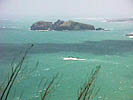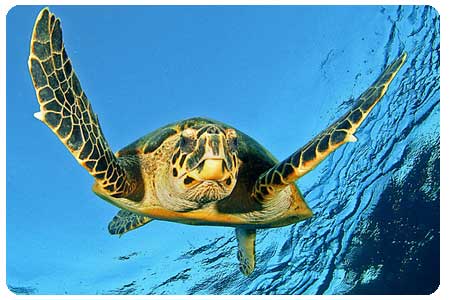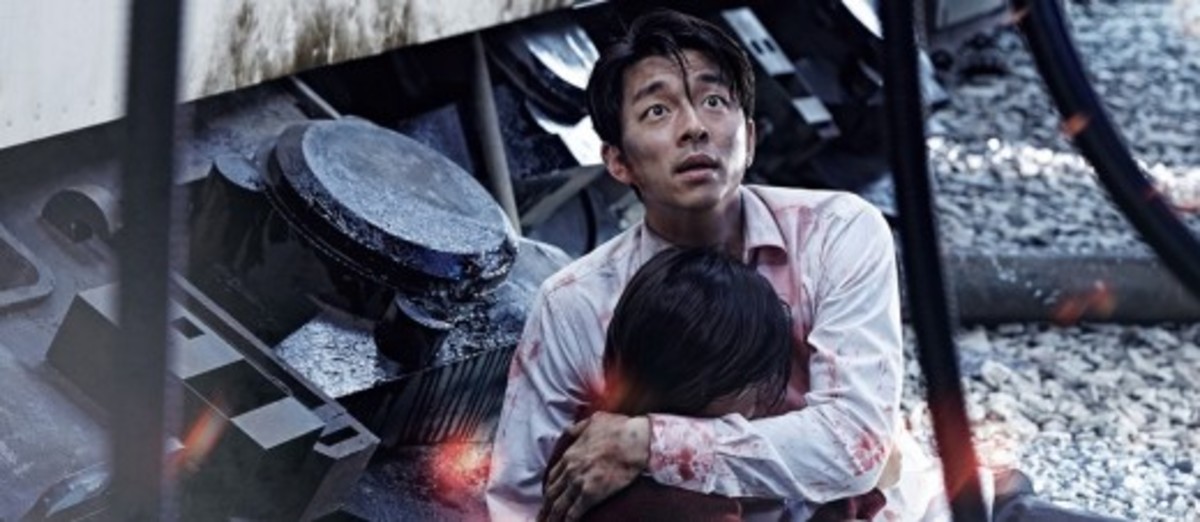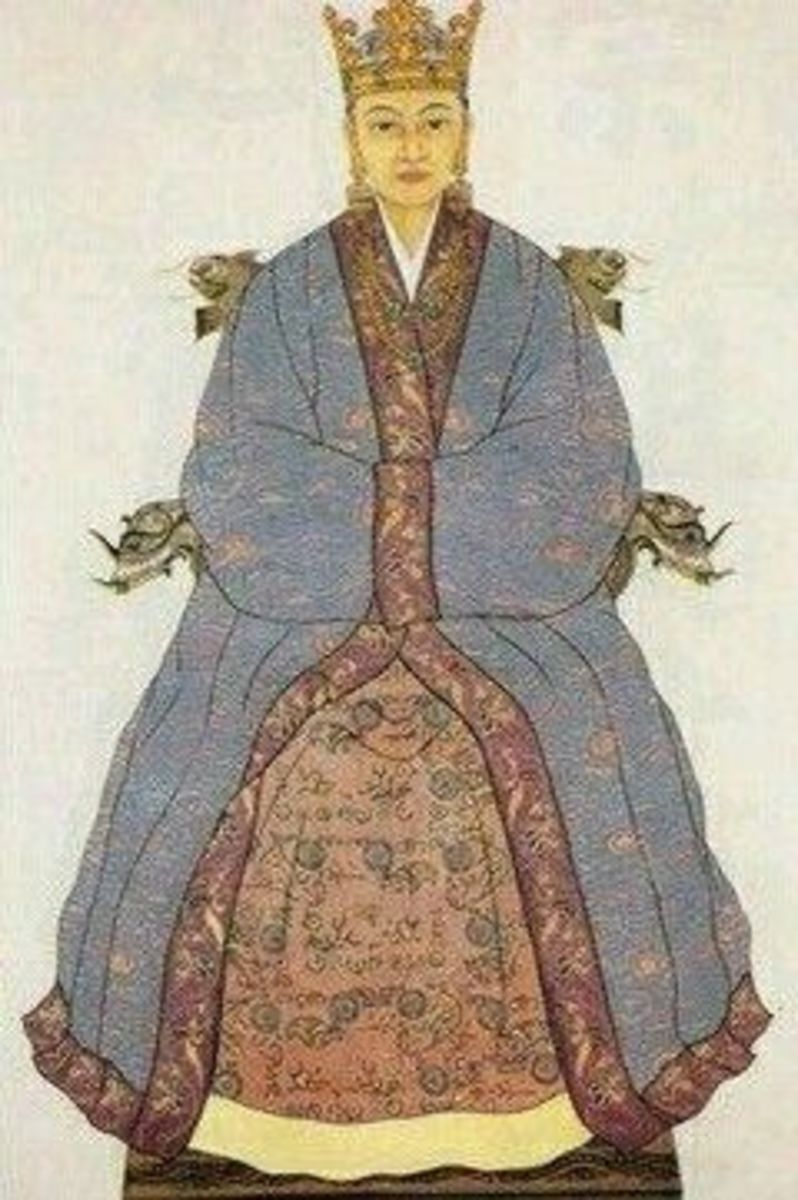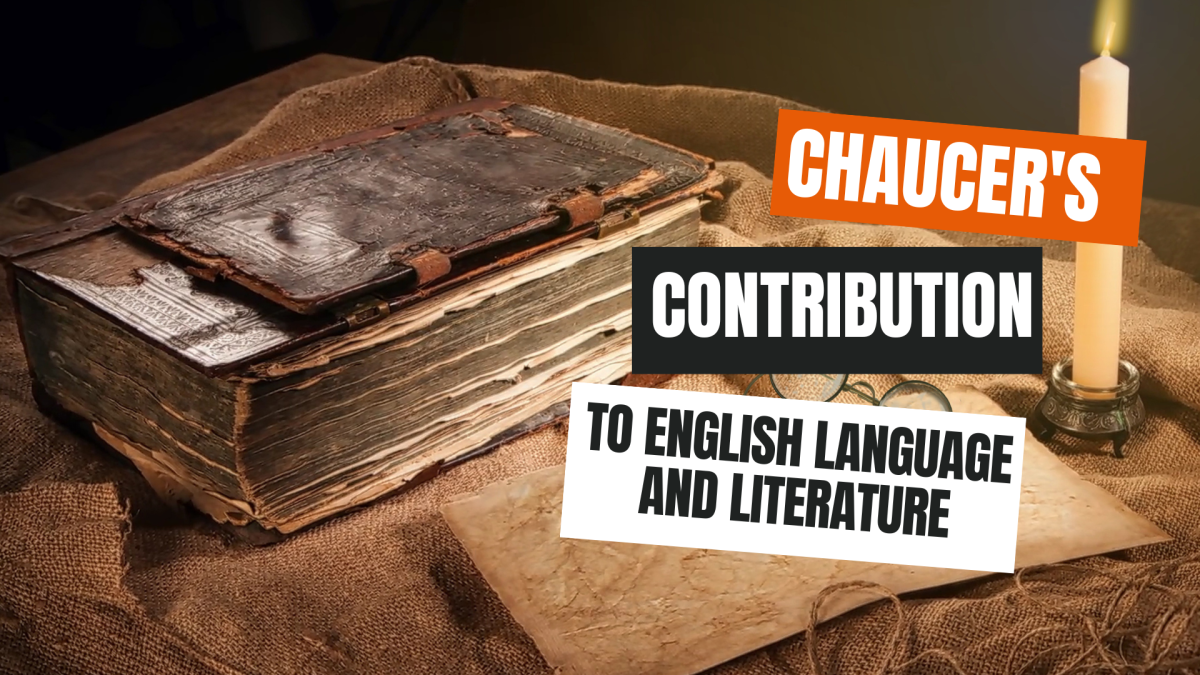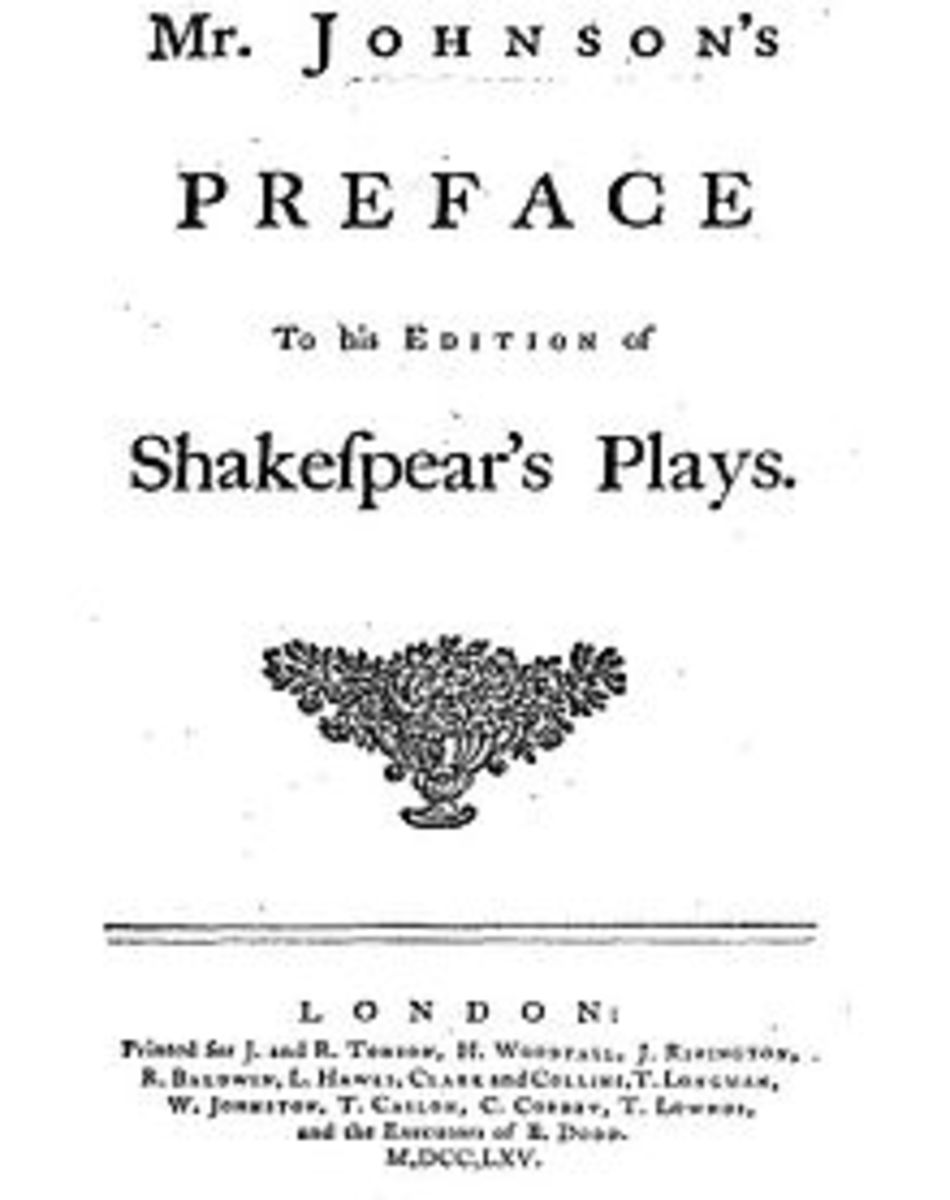Cloudbursts In a Small Island Village
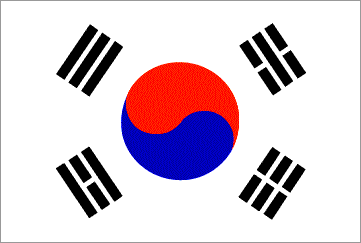
Korean author Hwang Sun-Won's stories, Cloudburst and In a Small Island Village examines the degree of social deterioration within Korean society, due to the Japanese occupation. Both storieshave parallel themes, ranging from the collapse of the family social order to the eventual fall of Korean society as a whole. One recurring theme in many of Hwang's stories is the hardships that his main characters endure. By the end of both stories, the main characters lose their loved ones to death. The loss of innocence and the significance of circles also play a vital role in both of Hwang's stories. In these two stories, Hwang raises the question of whether or not Korean society can survive under harsh, ever changing governmental rule.
One major theme in both of Hwang's stories is the failure to save, or the act of saving in vain. Chini rescues Ugi from drowning and the boy from Cloudburst saves the girl from the cloudburst (Hwang didn't give them names). Chini and the boy only delay the inevitable. Although each succeeded in saving their loved ones, they finally lose to fate at the end of each story.
In Hwang’s story, In a SmallIslandVillage the names of the characters are important whereas in Cloudburst, the omission of names is important. Hwang specifies that the boy who is named Ugi is a direct descendant of many “Ugis” before him, and that Chini is a direct descendant of many “Chinis” before her. All the boys in the village are referred to as “Ugis.” In turn, all of the girls in the village are referred to as being “Chinis.” Hwang indicates this paradox very clearly in the following, stating that, “Now a great number of young Ugis were playing on the rock […] A Distance away, from them in this direction, many young Chinis were gathering clams” (7). Each of the characters of the same name repeats the same actions as the people who had preceded them and because of this, each character ultimately face the same consequences. In addition to this, Hwang suggests that the cycle is endless, without any hope of reconciliation. Further, the name Chini and Ugi may also imply a degree of foreign intervention. For example, in the name “Chini,” Chin is its root word, as in China. Perhaps not as implicit, the name “Ugi” is a familiar Japanese name. Both China and Japan had greatly influenced Korea—its neighbor—in the past. Korea was a subject of ethnic cleansing and foreign intervention by both warring nations. Pertaining to this idea, one of Hwang’s messages could be viewed as being of somber sort either of the following ways—Korea is comprised of Japanese and Chinese descendants and that because, the future of Korea is in jeopardy. Another possibility is that the very cycle that “creates” Koreans will continue, unless traditional values return to Korea.
The character of Chini in Hwang's, In a Small Island Village saves Ugi from drowning. Ugi is a fisherman who ventures further and further away from his village in search of larger bounties of fish. Chini is a girl from the village, who grew up with him in their village. The summer Ugi turned eleven and Chini turned ten, Ugi almost dies from drowning. Ugi's friends were betting on who could stay at the bottom of the water the longest. When it was Ugi's turn, he swam down beneath the surface and held on tightly to a rock. He remained that way long after his friends had abandoned him, who thought him to be already dead. Seeing Ugi's friends leave in haste, Chini runs over and then plunges in after him. After she struggles to pull him free from the rock, she pulls him to shore and resuscitates him by sucking seawater from his nose and then from his mouth. After doing so, Ugi becomes sexually aroused, and his "member" begins to move about. Years later, Ugi and Chini become husband and wife.
According to the story, young Ugi swam and played with his friends at a place near his home at “Turtle Rock.” Suffice to say turtles are significant to most of Asia, most notably in the traditions of Korea and China. Turtle shells resemble a total of eight hexagrams, symbolizing the following properties of the I Ching: Water, Mountain, Lake, Fire, Earth, and Wind. The I Ching is still to this day, relied upon as a source of information and consultation. The two hexagrams in the middle of turtle shells also represent the two conflicting properties of Yin and Yang.
As her mother and all of the other women in the village, "Chini had to live with the knowledge that the men had to go to sea when they turned seventeen. Feelings of loss or sorrow were out of the question" (9). Inversely here, death In a Small Island Village is a part of life. In the beginning of the story, Chini is introduced lamenting over her own father's death and/or imitating her mother. Ugi is introduced as reenacting the way in which his father (who was also lost at sea) by setting "adrift a piece of pine bark that was shaped like a boat" (7) and watched as the heavy waves of the sea pulled it under. Both Chini and Ugi's father were lost at sea at the same time, so they both shared in the grief of losing their fathers. As a prognostication, Chini makes the claim that, "Someday, when [Ugi dies], I'll cry like this for [him]" (7). So, in a sense, both Chini and Ugi are tainted by love and by death. Chini's love for Ugi saves him from drowning and the deaths of their fathers bring them closer to each other.
The shortages of fish forces Ugi to venture further and further out to sea with the other fisherman. Overtime, when Ugi finally does return home to Chini, he complains about the rowboats being unsuitable to his cause: "'It's no good using rowboats. We have to get a motorized boat and go far out to sea" (9). As Hwang writes, "Ugi had not been going out to sea for three years before he began to feel dissatisfied with their meager catch (9). This passage could mean three things: 1) Ugi must venture further out to sea, thus risking and/or sacrificing his own to save the people in the village by providing them with an adequate supply of fish, 2) he is discontent being married to Chini and so wants to leave her to find someone else, and 3) rowboats symbolize the old, traditional Korean culture, and motorized boats symbolize the revolution or technology which will either preserve or deteriorate Korean culture in the future. However, what is evident here above all else is that Ugi wants change. He wants to change the way in which he lives. He is "dissatisfied" with what he has and wants something better.
The most underlying message In a Small Island Village of all is that Ugi and Chini are doomed. Ugi is doomed to die at sea, just like his father before him and so on. The acquisition of motorized boats may or may not prevent Ugi and Chini's son from death while out at sea. Due to this fact, the village will either remain the same or perish, as the fatal circle continues. There is some speculation that Ugi and Chini's unborn son will follow the same fate as his father and his male ancestors, which will ultimately determine the fate of the village. Years after Ugi was lost at sea, when his son is fifteen, Chini speculates that he is curious and harbors with him the same tendencies of his late father. He daringly swims underneath the moving motorized boats close to the village. Chini, without success tries to dissuade him from the water. However, her repeated attempts fail, because in two years or so, he too will be made to go out to sea, just as his father Ugi before him. His fate was already predetermined while he was still in Chini's womb. Before he is born, his innocence was already in jeopardy. "Whatever I do," Chini says, "I can't keep him from [the sea] forever. These days I even think that the night his father drew me outside, he was not actually calling me—he was luring the baby inside me to the sea" (12).
The circle imagery in Hwang's story symbolizes the endless cycle of both life and death. Turtle Rock is associated with the young boys who play and swim close to the shoreline of the village who'll someday become fisherman. The clams in which Chini collect are associated with the young girls, whose fate is to become widows of the young boys in the future. Towards the end of the story, Hwang's story shifts from third-person narrative to first-person narrative. The narrator reflects that, "Her son was diving underwater as if he would pass beneath the bottom of the boat again. Even from this distance, I could see the rippling circles in the water following one after another" (13). Each of the "rippling circles" represents each generation of Ugis in the village, who follow their father's "ripple" before him without end.
In Cloudburst, there is great distinction between the boy and the girl. The boy is from a rural, agrarian social class and the girl moves to his village from the city (Seoul). The act of the girl's family moving into the country symbolizes cultural regression. The girl is associated with dirt and filth, whereas the boy is associated with purity and water. The girl represents South Korea, being that she and her family fled from Seoul. Her inability to cope with her environment ultimately destroys her. The boy is in the prepubescent stage of his life and the girl is at the beginning stage of menstruation. Just as Chini had once saved Ugi from death, the boy saves the girl, only to lose her to fate. Neither love nor life can thrive in their society. Change is paramount to the betterment of each story's society.
As in the story, In a Small Island Village, circles are important. The boy jumps onto the calf's back and rides around on him in circles. By doing this, the boy is putting the calf's life in danger, because he could bend its back permanently, making him obsolete to the enraged farmer. The calf is also too young to have a ring on its nose, which symbolizes pre-adolescence or the omission of eternity. The calf also represents innocence in danger of being destroyed, or is a trope to foreshadow the ending of the story. In essence, the boy is committing suicide, because the calf is representative of himself. So being negligent, the boy is actually causing the utter demise of himself. The silk clam that the boy finds in the stream represents fertility. It also represents the circle of life, because of the pearl inside of it. The sexual connotations within Hwang's text alludes to the fact that both the boy and the girl as being fertile, and so are capable of procreation. The girl menstrual cycle is also a circle.
In Hwang’s Cloudburst, the first scene of the story opens by introducing us to the boy and girl who first meet on either side of a stream. This “stream” could well be viewed as the border between North and South Korea. The boy is representative of the North’s regression of an agrarian society and the girl is representative of the South’s receding industrial society. While washing her hands and face, the girl picks up a white pebble and throws it at the boy, hitting him. In reaction to the girl, the boy crosses over the stream and pursues her through the fields of reed tufts. Though subtle in the way of childish flirtation, the scene may have some serious historical implications. Perhaps here, Hwang is suggesting the existing conflict between North and South Korea. As a recurring theme throughout the story, the boy and girl always meet at the very same stream.
While playing together the boy and girl venture further and further into the “country.” Along their expedition the boy and girl make discoveries—alluding to maturity, preservation of traditional values and death. Throughout the adventure, the girl teaches the boy about being mature and in return, the boy teaches the girl about agriculture. In other words, the boy is knowledgeable of the country and the girl is knowledgeable of the city. The fusion of their strong traits is sufficient to the survival of both—North Korea (the boy) is undeveloped and South Korea (the girl) is mature, or developed. Hwang suggests that the girl is more sophisticated or developed than the boy by mentioning that she undergoes menstruation. Aside from the boy’s obvious attraction to the girl, Hwang makes no mention of the boy reaching maturity or undergoing any changes in his physique, with the exception of the following passage; “the boy unconsciously fingered a walnut in his pocket, and with his other hand he broke off reed tufts” (65). While the two are gathering flowers the girl begins to bleed, signaling the beginning of her menstruation. “A drop of blood appeared on the girl’s right knee” (60). The notion of escape and seeking shelter is also consistent with the girl. She and her family are constantly on the moving throughout the story and are liken to nomads or refugees who flee from war and political aggression. After the girl returns home, she learns that soon after the Harvest Moon Festival her family were to move again (64).
After the two reach a clearing in the fields, a storm approaches causing them to seek shelter. “Clouds dark as india ink had gathered over their heads. Suddenly there was a commotion all around them. The wind gusted, and everything turned a dark violet […] they spotted the watchman’s hut through the rain and mist. There was nothing to do but take cover there” (61). The approaching storm and cloudbursts symbolizes war and eminent doom for both the boy and girl. When they return home, the boy carries the girl across the stream due to her illness and the rising of the stream. “When they came to the [stream], they found the water was now turbulent and a deep red muddy color. They couldn’t jump over it. The boy turned back to the girl. She meekly let him carry her across” (62). After doing so, a large stain the color of “muddy water” (63) appears on the front hem of the girl’s sweater. The same stain appears on the boy’s back. The girl then becomes seriously ill causing her to remain home for several days. Soon after, she mysteriously dies to the chagrin of the boy, who mourns for her company.
Whereas in Hwang’s In a small IslandVillage, the characters’ names are important, the names of the boy and girl in Cloudburst are not. Their names are not mentioned for a number reasons. The ambiguity of the names could well be linked to the fact that they had lost their identity due to the ever-changing structure of Korean society caused by foreign intervention, most notably the Japanese occupation during the start of the twentieth century. Under Japanese rule, Korean language and culture was lost. The Japanese enforced laws that prohibited the use of Korean language, which in turn, affected Korean culture directly. The instability of their society is directly linked to the ruin and demise of Korean culture. In the post-Japanese occupation era after World War II, Korea sought to regain its identity and vied for governmental control. In the process, the Korean War began, causing Korea itself to split in two. Similarly, the two characters in each of Hwang’s stories represent the dichotomy of Korean society clashing with one another, much in the same manner as the eternal contradiction between the Yin and Yang, which coincidentally, is incorporated into South Korea’s national flag. The death of the girl prevents the future births of Korean offspring. Her death also represents the death of South Korea. Further, her demise suggests the extinction of Korea—neither boy nor girl—neither North nor South—can possibly survive without one another. Hwang implies that in order for Korea to survive, both sides must come together, setting aside their differences and unite as one.
Although the boy saves the girl from the cloudburst, he cannot save her from her illness. The availability of vaccines may have prevented the girl from dying, or maybe the vaccines were available, but the girl's family could not afford to purchase them, being poor. The boy and the girl have a mutual relationship with one another. The two need each other in order to survive. Being lonely without the girl, the boy needs the girl for companionship. In turn, the girl needs the boy's knowledge of the country in order to survive. Without the boy, the girl dies and without the girl, the boy becomes lonely and destitute. Their symbiotic circle is broken when she dies.
The cloudburst in itself represents the past coming back to haunt the girl. It could also represent the Korean War and the social, economic hardships that will befall Korea. The dark-violet cloudburst could be acid rain that has accumulated over Korea due to the rise of industry in Seoul. The falling rain that emits from it could well allude to artillery and bombs, because they too fall from the sky. The boy had carried the girl into the farming shelter so as to protect her from the cloudburst. When he does, she is bleeding due to her menstrual cycle which alludes to her being wounded—an implicit war image. The bloodstain that collects on the boy's shirt symbolizes that he is tainted by her and so shares her grief.
In both stories, Hwang sends out a clear message: The need for social reform and stability are critical to the health and well-being of Korea. The family social structure is either non-existent or incomplete. The circle imagery in both stories represents the cycle of life, whether demeaning or fruitful. Overall, the Ugi's death from, In a Small Island Village and the girl from Cloudburst represent the loss of innocence and the absence of hope for the future of Korea. Love does not triumph over adversity in either story; neither does life triumph over death. Chini and the boy try, but cannot divert fate from imminent doom. The act of rescuing their loved ones from death merely delays the inevitable. Hwang surmises that unless major changes are made—unless both North and South Korea unite—hardships will continue to plague the future of Korea.
© Copyright 2003, O. Dohn Paditsone. All Rights Reserved.
